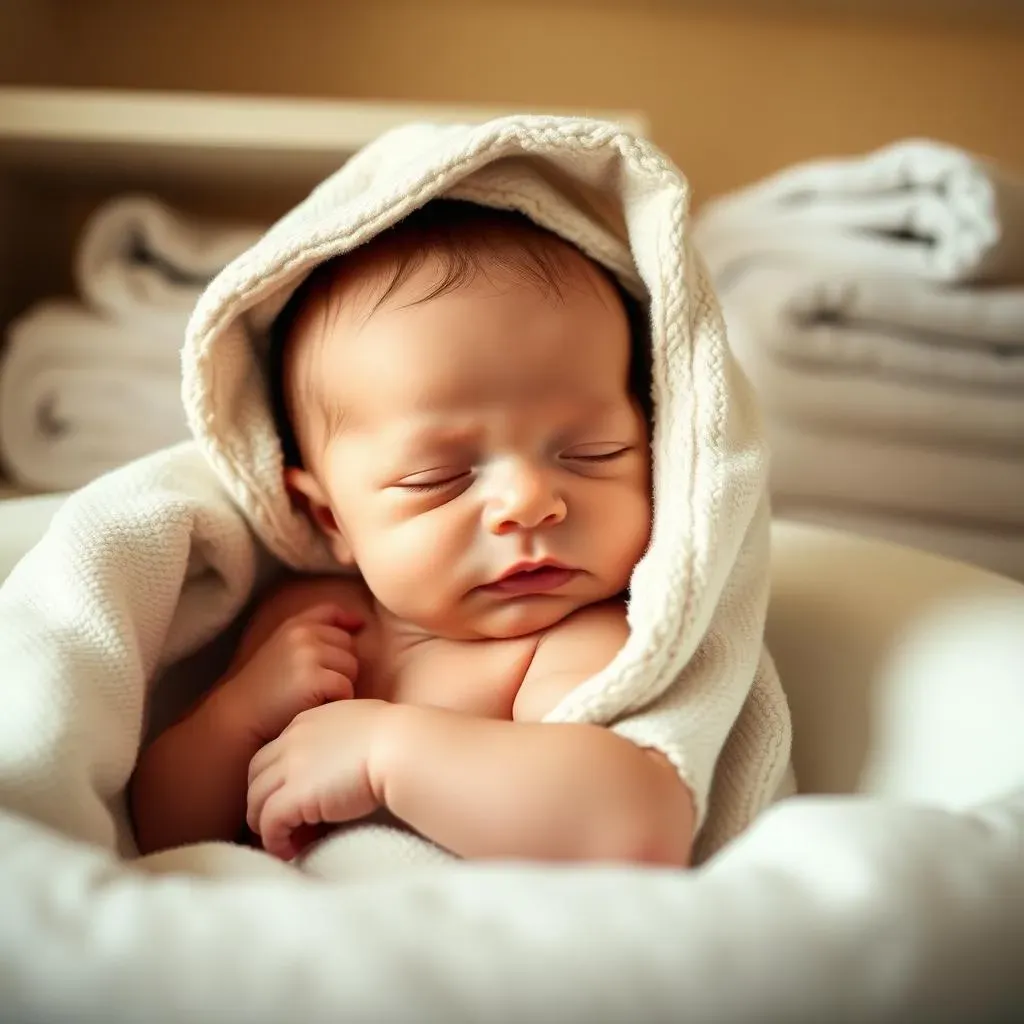Table of Contents
Bringing a new baby home is a whirlwind of excitement and preparation. Among the tiny clothes and adorable toys, you're probably wondering about the essentials, like, "How many baby hooded towels do I need?" It's a valid question! You don't want to be caught short after a bath, but you also don't want to overcrowd your linen closet with unnecessary items. Figuring out the sweet spot involves considering your laundry habits, your baby's spit-up frequency (it happens!), and your personal preferences.
Why Hooded Towels Are a Nursery Essential
Why Hooded Towels Are a Nursery Essential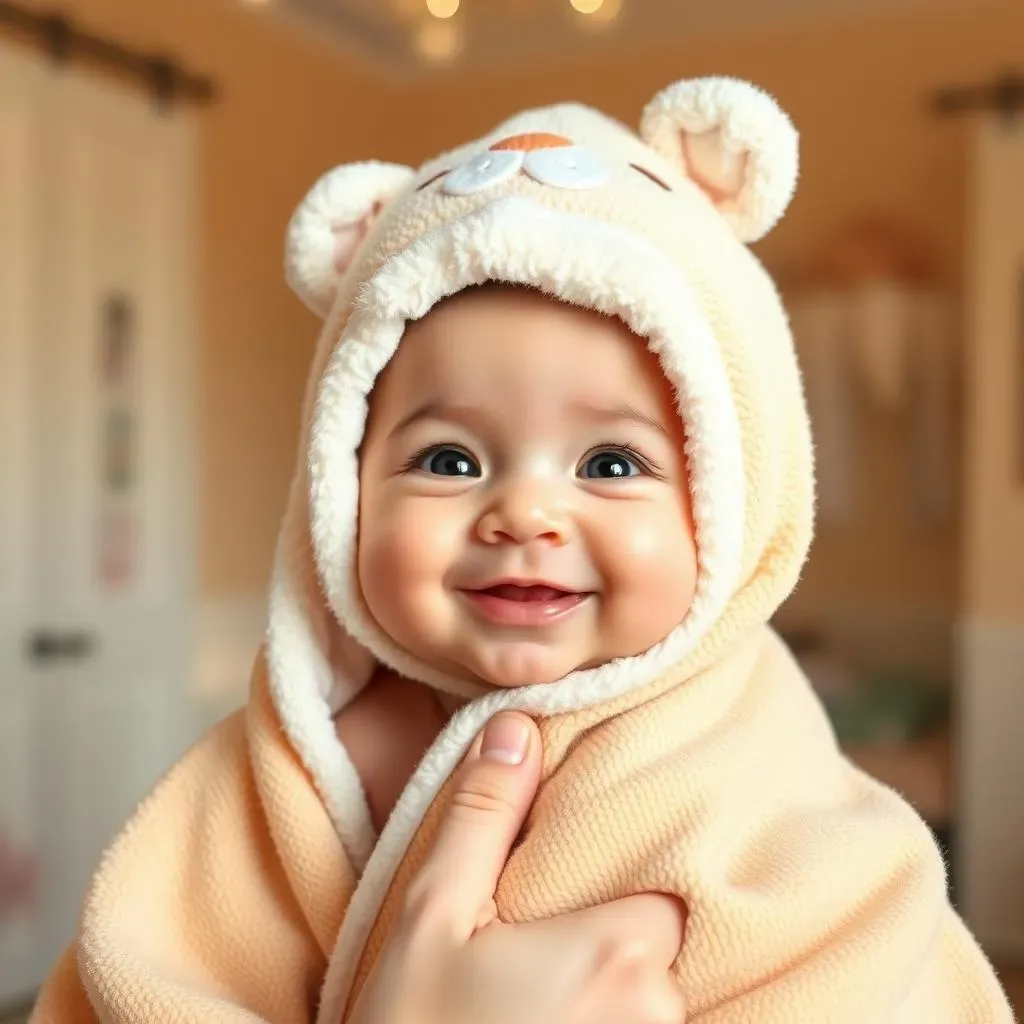
The Cozy Factor: Comfort and Security
Let's be real, babies aren't exactly fans of being naked and cold after a warm bath. A hooded towel provides that immediate sense of comfort and security they crave. The hood helps to quickly warm their little head, preventing heat loss and those post-bath shivers. It's like a warm hug that makes the transition from bath to cuddle time much smoother (and less tearful!).
Beyond the warmth, the soft material of a good hooded towel feels gentle against their delicate skin. Think about it – their skin is brand new! You want something that's going to be kind and soothing, not rough or scratchy. That feeling of being swaddled in a soft towel can be incredibly calming for a baby, helping them to relax and wind down before a nap or bedtime.
Practicality Meets Cuteness: More Than Just a Towel
Hooded towels aren't just about comfort; they're super practical too! That little hood stays put, which means the towel is less likely to slip off while you're trying to wrangle a slippery, wiggly baby. This is a lifesaver, especially when you're multitasking (which, let's face it, is basically all the time as a parent).
And let's not forget the cuteness factor! I mean, is there anything more adorable than a baby wrapped up in a hooded towel with little animal ears? It's the perfect photo op! But beyond the Instagram-worthy moments, a hooded towel is a functional and comforting addition to your baby's bath time routine.
Feature | Benefit |
|---|---|
Hood | Keeps baby's head warm, prevents slippage |
Soft Material | Gentle on delicate skin, provides comfort |
Cuteness Factor | Adorable photo opportunities! |
How Many Baby Hooded Towels Do I Need? Finding the Right Number
How Many Baby Hooded Towels Do I Need? Finding the Right Number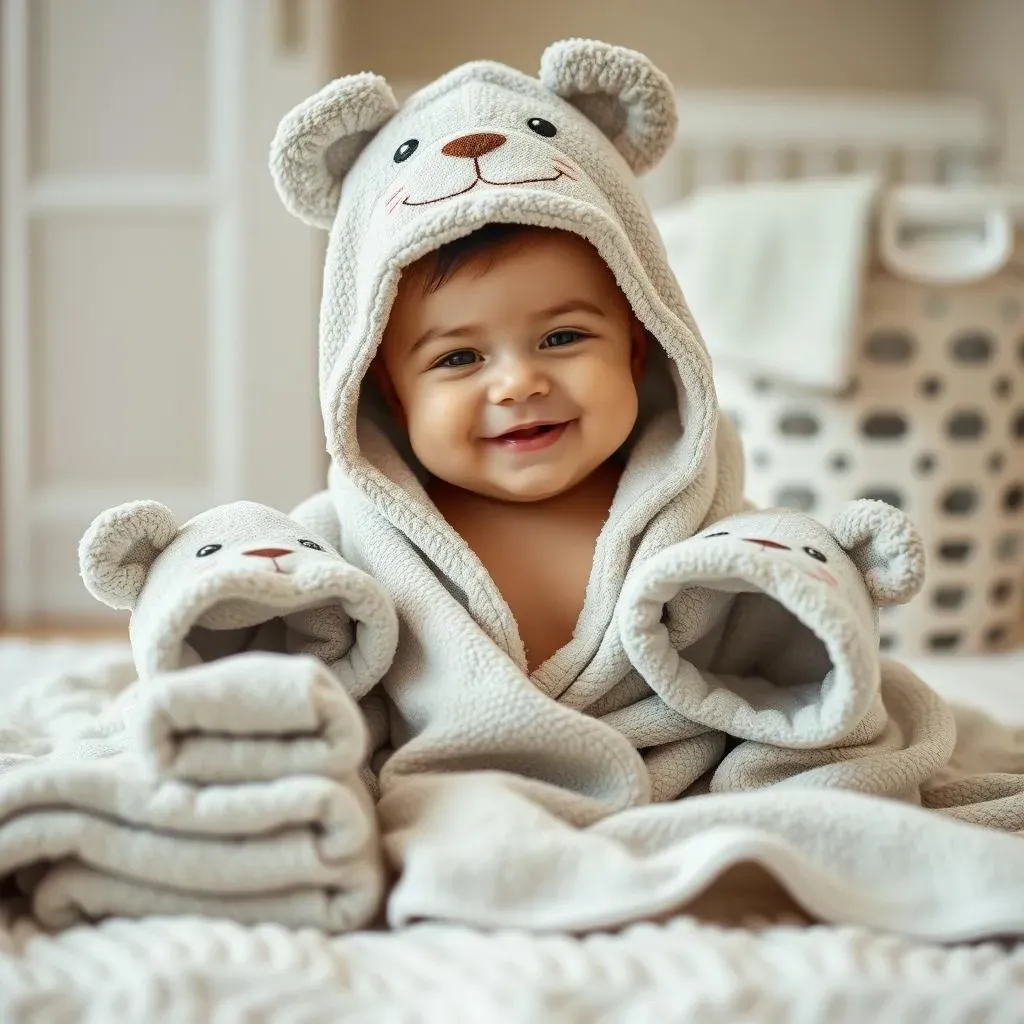
The Magic Number: Striking the Right Balance
Alright, let's get down to brass tacks: How many baby hooded towels do I need? The truth is, there's no one-size-fits-all answer. However, a good starting point is between two and four hooded towels. This allows for enough towels to use while others are in the wash, or if you experience those inevitable baby messes. Think about your laundry routine. Do you do laundry every day, or are you more of a once-a-week warrior? If you're on the frequent laundry train, two might suffice. If you tend to let things pile up, four is a safer bet.
Also, consider this: babies spit up. A lot. Sometimes that spit-up lands on the towel. Having a few extra on hand ensures you're never reaching for a soiled towel after bath time. Plus, if you have a particularly messy baby (and let's be honest, many are!), you might find yourself going through more towels than you initially anticipated. It's always better to be prepared!
Laundry Frequency | Recommended Number of Towels |
|---|---|
Daily | 2 |
Every Other Day | 3 |
Twice a Week | 4 |
Once a Week | 4+ |
Factors to Consider When Stocking Up on Baby Towels
Factors to Consider When Stocking Up on Baby Towels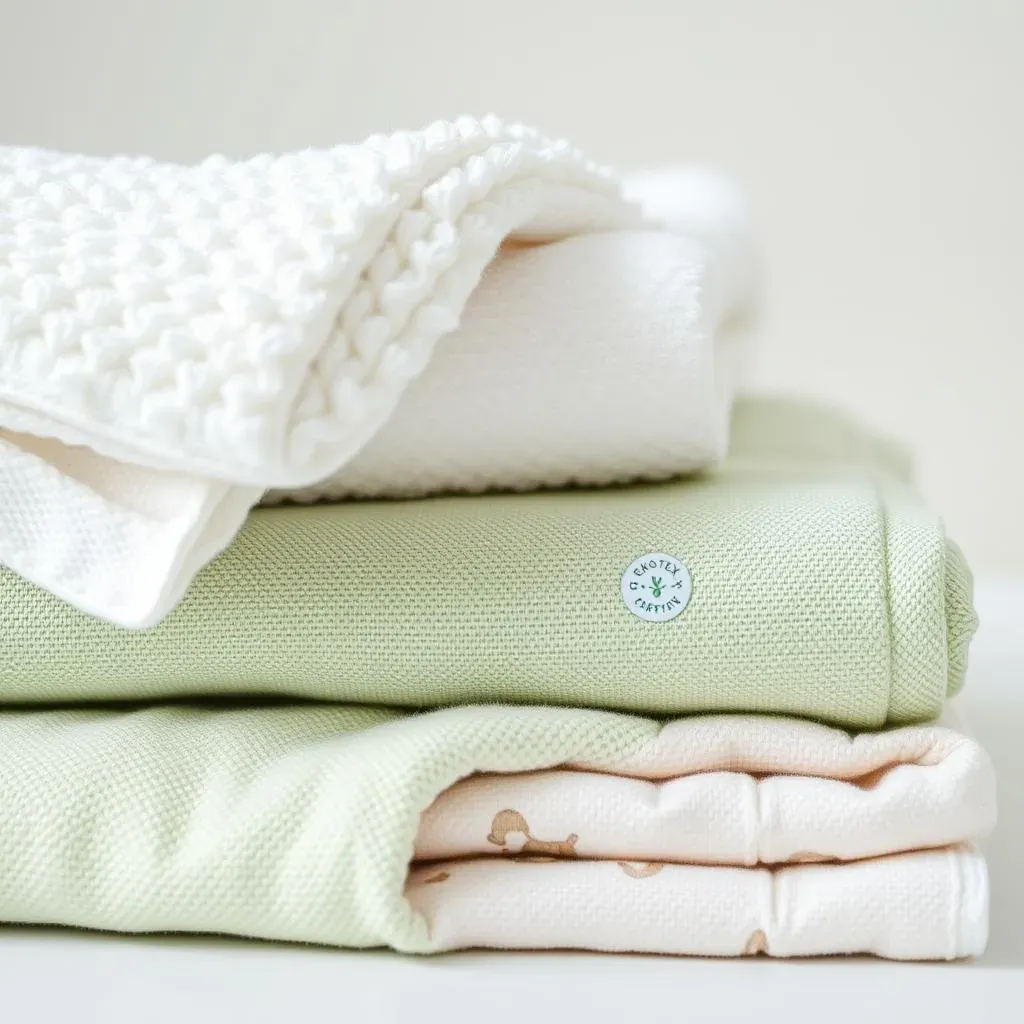
Material Matters: Softness and Absorbency
When you're deciding how many baby hooded towels do I need, the material is key. Think about what feels good against your own skin – you want that same level of comfort for your little one! Cotton is a classic choice, known for its softness and absorbency. But not all cotton is created equal! Look for options like Turkish cotton or Egyptian cotton, which are extra plush and gentle. Bamboo is another great option; it's incredibly soft, naturally antibacterial, and highly absorbent. Just be mindful that bamboo can sometimes be a bit pricier.
Also, keep an eye out for certifications like Oeko-Tex, which means the fabric has been tested for harmful substances and is safe for your baby's sensitive skin. Nobody wants to wrap their precious bundle in chemicals! And while those super-cute character towels might be tempting, sometimes the printed designs can make the fabric a bit rougher. Prioritize softness over style when it comes to baby towels.
Size and Thickness: Finding the Perfect Fit
Size and thickness are also important factors to consider when stocking up on baby towels. You want a towel that's large enough to fully wrap your baby, but not so huge that it's unwieldy. A good size to aim for is around 30x30 inches or 32x32 inches. This provides ample coverage without being overwhelming.
Thickness is related to absorbency – a thicker towel will generally be more absorbent. However, a super-thick towel can also take longer to dry, which can be a breeding ground for bacteria. Look for a towel that's thick enough to be absorbent but still dries relatively quickly. A good rule of thumb is to check the GSM (grams per square meter) – a higher GSM indicates a denser, more absorbent towel. Aim for a GSM of around 400-600 for a good balance of absorbency and drying time.
Factor | Considerations |
|---|---|
Material | Cotton (Turkish, Egyptian), Bamboo, Oeko-Tex certification |
Size | Around 30x30 inches or 32x32 inches |
Thickness | GSM of 400-600 for good absorbency and drying time |
Caring for Your Baby's Hooded Towels: Maintenance and Longevity
Caring for Your Baby's Hooded Towels: Maintenance and Longevity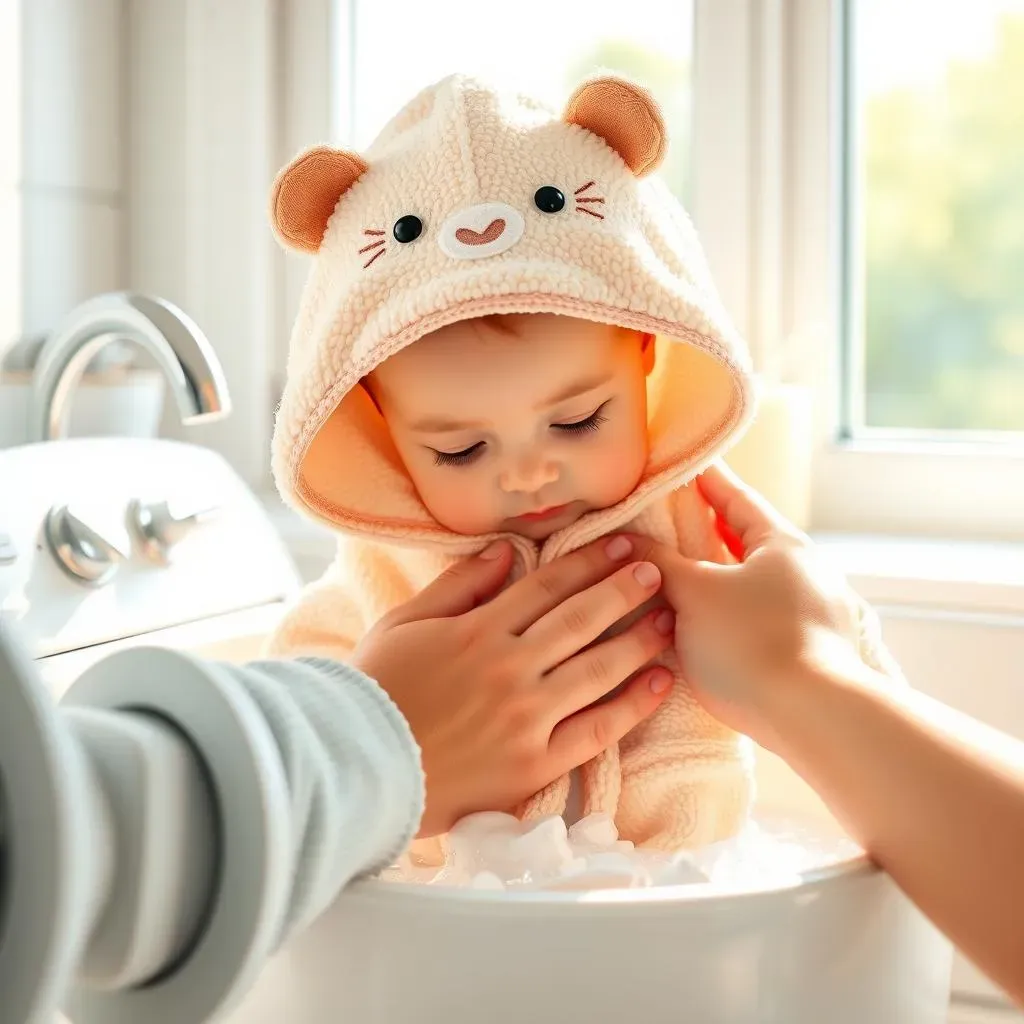
Wash Wisely: Keeping Them Soft and Snuggly
So, you've figured out how many baby hooded towels do I need, and you've chosen the perfect ones. Now, let's talk about keeping them in tip-top shape! Proper washing is key to maintaining their softness and absorbency. Always wash new towels before their first use to remove any manufacturing residues. Use a gentle, baby-safe detergent that's free of harsh chemicals and fragrances. These can irritate your baby's sensitive skin and break down the fibers of the towel over time. And avoid using fabric softeners! They might make the towels feel softer initially, but they actually reduce absorbency by coating the fibers with a waxy residue.
When it comes to water temperature, warm water is generally best. Hot water can fade colors and damage the fibers. And be sure to give those towels a good shake before tossing them in the dryer. This helps to fluff up the fibers and prevent them from becoming stiff. Speaking of drying, low heat is your friend! High heat can cause the towels to shrink and become less soft. If possible, consider line-drying your baby's hooded towels. The fresh air will naturally soften the fibers and give them a lovely, clean scent. Just avoid drying them in direct sunlight, as this can fade the colors.
Dealing with Stains and Smells: Tips and Tricks
Let's face it, babies are messy! Stains and smells are just part of the parenting package. But don't worry, there are ways to tackle those inevitable messes without resorting to harsh chemicals. For stains, try pre-treating the affected area with a paste of baking soda and water. Let it sit for a few minutes before washing as usual. For tougher stains, you can try a baby-safe stain remover, but always test it on a small, inconspicuous area of the towel first to make sure it doesn't cause any discoloration.
If your baby's hooded towels are starting to smell a bit funky, try adding a cup of white vinegar to the wash cycle. Vinegar is a natural deodorizer and can help to remove any lingering odors. Just don't use vinegar and bleach together, as this can create harmful fumes. And always make sure the towels are completely dry before storing them. Damp towels can quickly become musty and mildewy. Store them in a cool, dry place, away from direct sunlight.
Issue | Solution |
|---|---|
Stains | Pre-treat with baking soda paste or baby-safe stain remover |
Odors | Add white vinegar to the wash cycle |
Mustiness | Ensure towels are completely dry before storing |
Beyond Hooded Towels: Other Bath Time Essentials for Your Little One
Beyond Hooded Towels: Other Bath Time Essentials for Your Little One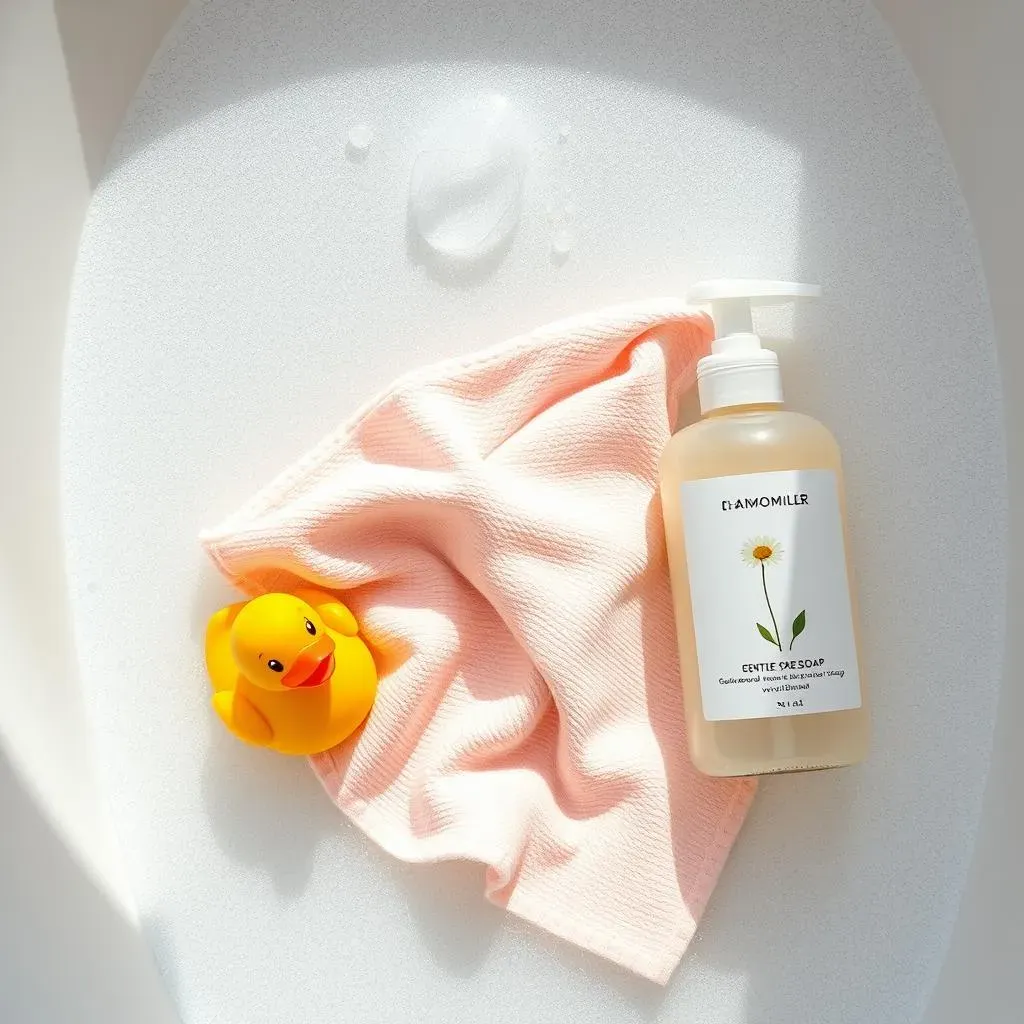
Soft Washcloths: Gentle Cleansing for Delicate Skin
so you've nailed the hooded towel situation, but what about actually washing your little one? Soft washcloths are an absolute must-have! Forget those scratchy, rough washcloths – your baby's skin deserves the gentlest touch. Look for washcloths made from the same soft materials as your hooded towels: cotton, bamboo, or even muslin. These are all gentle and absorbent enough for delicate baby skin. I personally love muslin washcloths; they get softer with every wash!
You'll want to have a good stash of washcloths on hand because, well, babies are messy! You'll use them for everything from washing their face and body during bath time to wiping up spit-up and drool throughout the day. Aim for at least a dozen washcloths to ensure you always have a clean one ready to go. Trust me, you'll thank me later!
Baby-Friendly Soap: Gentle Cleansing Without the Harsh Chemicals
Choosing the right soap for your baby is super important. Their skin is so sensitive, and harsh chemicals can easily cause irritation and dryness. Look for soaps that are specifically formulated for babies and are free of parabens, sulfates, phthalates, and artificial fragrances. These ingredients can strip away the natural oils in your baby's skin, leaving it dry and itchy. Instead, opt for gentle, tear-free formulas that are made with natural ingredients like chamomile, calendula, or aloe vera. These ingredients are known for their soothing and moisturizing properties.
When bathing your baby, a little soap goes a long way! You really only need a small amount to cleanse their skin. Focus on the areas that tend to get the dirtiest, like their diaper area, neck folds, and hands. And be sure to rinse thoroughly to remove any soap residue. After bath time, follow up with a gentle baby lotion to lock in moisture and keep their skin soft and supple.
Bath Toys: Making Bath Time Fun and Engaging
Bath time doesn't have to be a chore; it can actually be a fun and engaging experience for both you and your baby! Introducing bath toys can help to distract your little one and make them more comfortable in the water. Look for bath toys that are made from safe, non-toxic materials and are easy to clean. Avoid toys with small parts that could be a choking hazard.
Some popular bath toy options include rubber duckies, stacking cups, floating boats, and squirting toys. You can also use bath crayons to let your little one create their own masterpieces on the tub walls (just make sure they're washable!). Remember to supervise your baby closely during bath time and never leave them unattended, even for a moment.
Bath Time Essential | Benefits |
|---|---|
Soft Washcloths | Gentle cleansing, versatile for various messes |
Baby-Friendly Soap | Prevents irritation, keeps skin moisturized |
Bath Toys | Makes bath time fun and engaging |
Wrapping Up: Finding Your Perfect Hooded Towel Count
Ultimately, determining how many baby hooded towels you need comes down to your individual needs and lifestyle. Consider your laundry habits, baby's needs, and storage space. Whether you opt for a minimalist approach with a few essential towels or prefer to stock up for extra convenience, the goal is to ensure your little one is always warm, dry, and comfortable after bath time. With the right number of soft, absorbent hooded towels on hand, you can transform bath time from a chore into a cherished bonding experience.
